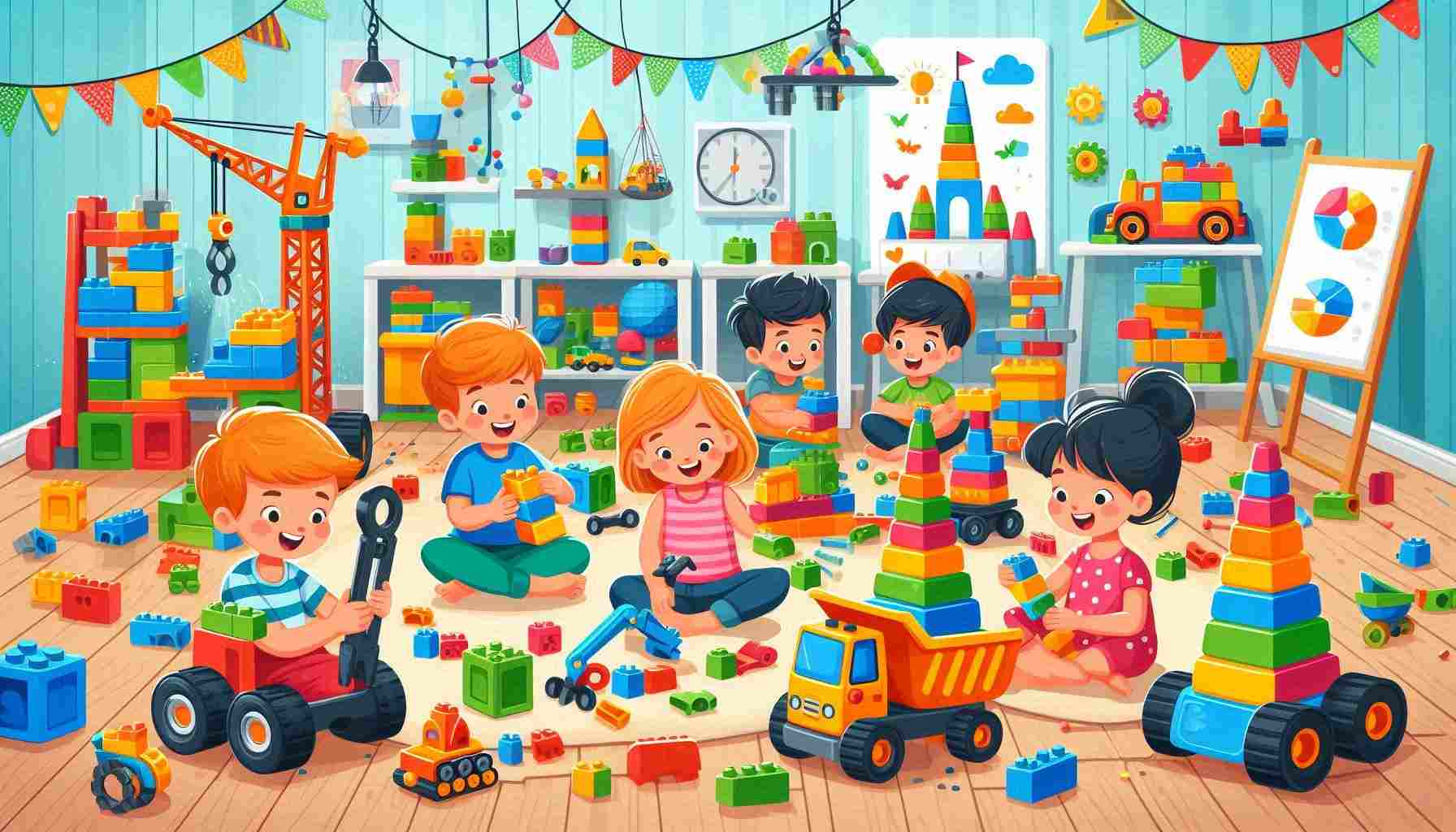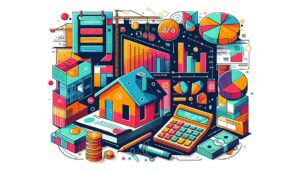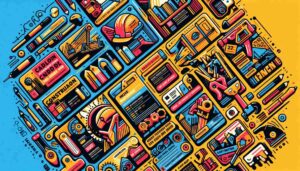As parents and educators, we’re always on the lookout for toys that can entertain and educate simultaneously. Construction toys fit the bill perfectly, providing a fun way for kids to develop crucial skills while letting their imaginations run wild. From classic wooden blocks to high-tech building sets, these toys have evolved over time but remain a staple in playrooms around the world.
Key Takeaways
- Construction toys foster creativity, problem-solving, and spatial reasoning skills
- They come in various materials and complexity levels, suitable for different age groups
- Popular brands include LEGO, K’NEX, Mega Bloks, and Magnet Tiles
- These toys can promote STEM learning and social skills through collaborative play
- Proper storage and organization can enhance the play experience and longevity of the toys
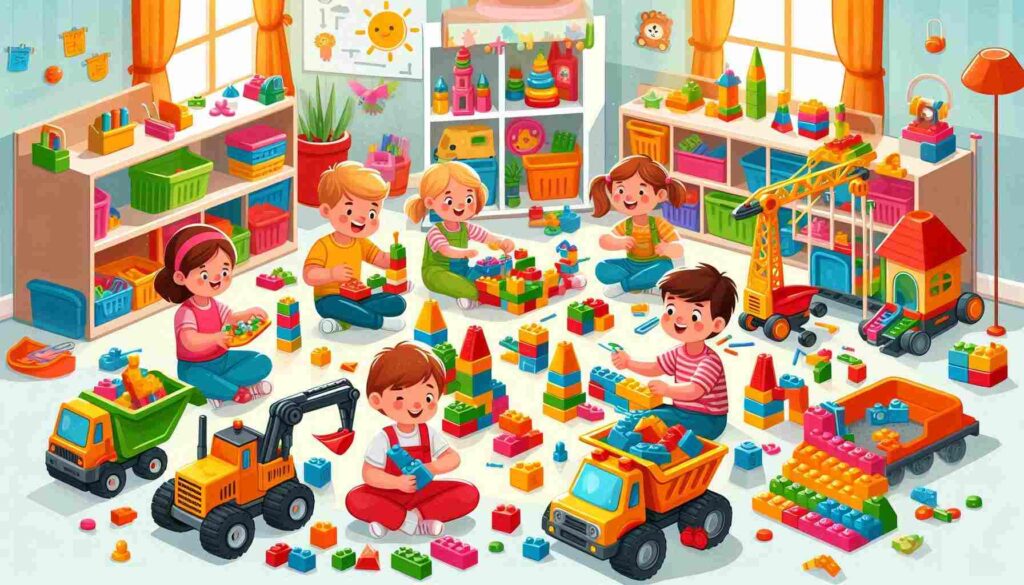
The Evolution of Construction Toys
Construction toys have come a long way since the simple wooden blocks of yesteryear. While those classic blocks still hold a special place in many playrooms, today’s kids have access to an incredible array of building options. From interlocking plastic bricks to magnetic tiles and even programmable robotics kits, the world of construction toys has expanded to meet the changing needs and interests of children in the digital age.
I remember when I was a kid, spending hours on end with my trusty LEGO sets. The satisfaction of clicking those bricks together and seeing my creations come to life was unmatched. Now, as a parent, I’m amazed at the variety of construction toys available to my own children. It’s like stepping into a toy store time machine!
Let’s take a closer look at some of the most popular types of construction toys and what makes them so special:
1. Classic Wooden Blocks
There’s something timeless about a set of simple wooden blocks. These unassuming cubes and shapes have been captivating children for centuries, and for good reason. Wooden blocks offer endless possibilities for open-ended play, allowing kids to create everything from basic towers to complex structures limited only by their imagination.
Benefits of wooden blocks include:
- Developing fine motor skills and hand-eye coordination
- Encouraging creative thinking and problem-solving
- Introducing basic concepts of physics and engineering
- Providing a tactile, screen-free play experience
My toddler loves her set of colorful wooden blocks, and it’s amazing to see how her creations have evolved as she’s grown. From simple stacks to intricate cities, these blocks have been a constant source of entertainment and learning.
2. Interlocking Plastic Bricks (LEGO, Mega Bloks, etc.)
When most people think of construction toys, LEGO is often the first brand that comes to mind. These iconic plastic bricks have been a staple in playrooms since the 1950s, and their popularity shows no signs of waning. LEGO and similar brands like Mega Bloks offer a wide range of sets catering to various age groups and interests.
Advantages of interlocking brick systems:
- Versatility in creating both simple and complex structures
- Theme-based sets that spark imagination and storytelling
- Opportunities for following instructions or free-building
- Compatibility between sets for endless combinations
I’ve lost count of the number of LEGO sets we’ve accumulated over the years, but I can say with certainty that they’ve provided countless hours of entertainment and learning for my kids. From recreating scenes from their favorite movies to designing their own futuristic vehicles, the possibilities seem endless.
3. Magnetic Building Sets
In recent years, magnetic building sets like Magnet Tiles and Magna-Tiles have gained popularity among parents and educators alike. These colorful, translucent shapes use the power of magnets to connect, allowing children to create 3D structures with ease.
Benefits of magnetic construction toys:
- Easy for younger children to manipulate and connect
- Encourages exploration of geometry and spatial relationships
- Allows for creation of both flat and 3D structures
- Integrates well with other toys for imaginative play
My kids were introduced to magnetic tiles at their preschool, and it wasn’t long before we had our own set at home. The way these tiles click together so satisfyingly is almost addictive, and I often find myself joining in on the building fun!
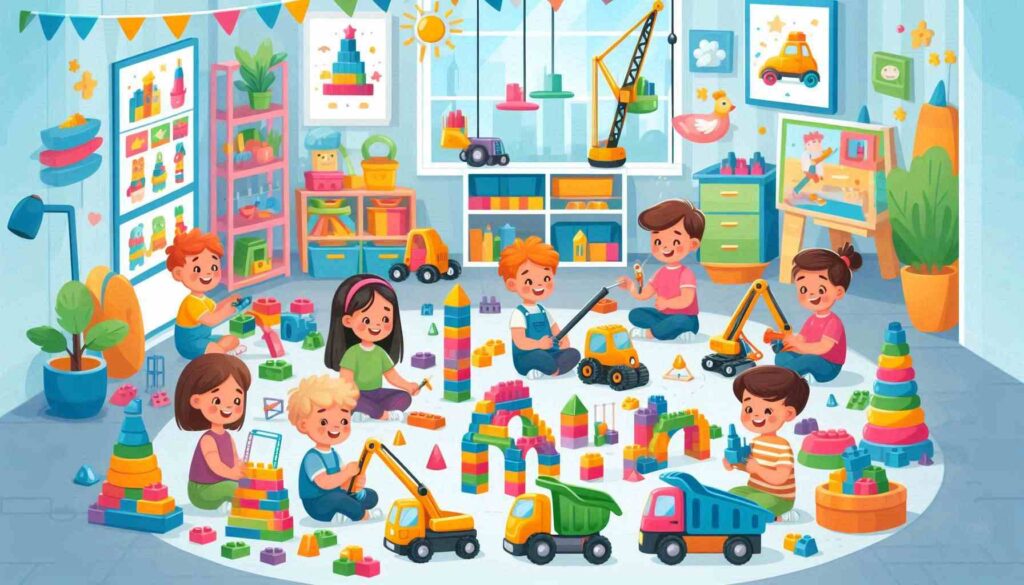
Nurturing Skills Through Play
One of the most remarkable aspects of construction toys is their ability to foster a wide range of skills in children, often without them even realizing they’re learning. As kids stack, snap, and create, they’re developing crucial abilities that will serve them well throughout their lives.
Let’s explore some of the key skills that construction toys help to nurture:
1. Fine Motor Skills and Hand-Eye Coordination
Manipulating small pieces and connecting them precisely requires dexterity and coordination. As children play with construction toys, they’re constantly refining these skills, which are essential for activities like writing, drawing, and using tools.
I’ve noticed a significant improvement in my daughter’s fine motor skills since she started playing with her magnetic tile set regularly. Her ability to manipulate small objects has improved, and she’s even become more adept at tasks like buttoning her own clothes.
2. Spatial Reasoning and Visualization
Building three-dimensional structures from flat pieces or imagining how different components will fit together helps develop spatial reasoning skills. This ability to visualize and mentally manipulate objects in space is crucial for many fields, including architecture, engineering, and mathematics.
It’s fascinating to watch my son plan out his LEGO creations, often sketching rough designs before diving into the building process. This kind of spatial thinking will undoubtedly serve him well in future academic and professional pursuits.
3. Problem-Solving and Critical Thinking
Construction toys present children with constant challenges to overcome. Whether it’s figuring out how to make a structure stable or determining the best way to recreate a specific design, kids are constantly engaged in problem-solving activities.
I’ve seen my children’s problem-solving skills grow exponentially through their play with construction toys. They’ve learned to approach challenges from different angles, test hypotheses, and persevere when things don’t work out as planned.
4. Creativity and Imagination
Perhaps the most obvious benefit of construction toys is the way they foster creativity and imagination. With a pile of blocks or bricks, children can bring any idea to life, from fantastical creatures to futuristic cities.
The creative possibilities of construction toys never cease to amaze me. Just the other day, my daughter transformed a simple set of wooden blocks into an entire zoo, complete with makeshift animal enclosures and a visitor center!
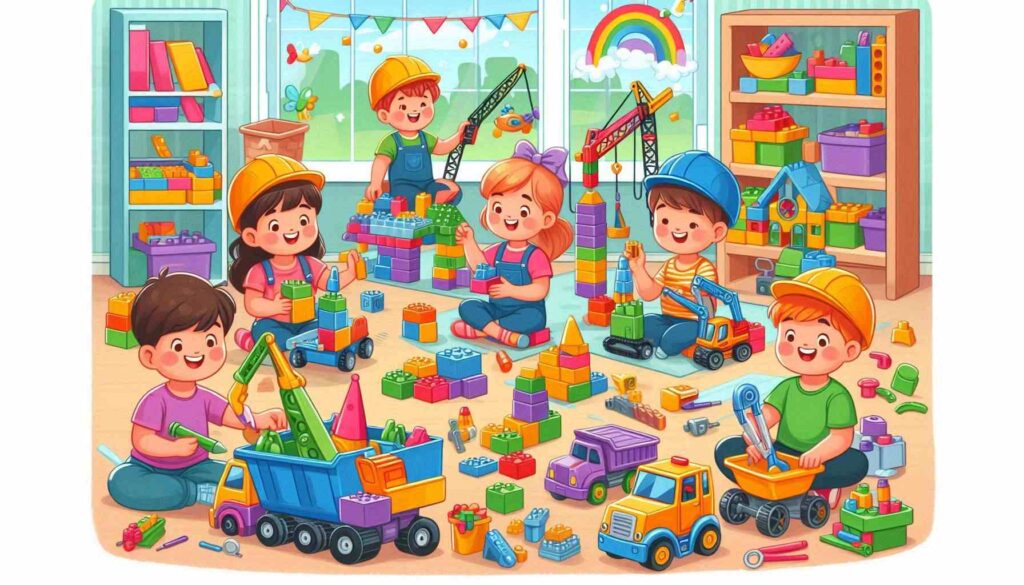
Choosing the Right Construction Toys
With so many options available, selecting the right construction toys for your child can feel overwhelming. Here are some factors to consider when making your choice:
1. Age Appropriateness
Different construction toys are designed for specific age groups, taking into account factors like piece size, complexity, and required skills. It’s important to choose toys that match your child’s developmental stage to ensure both safety and engagement.
For younger children (ages 1-3), larger blocks or chunky interlocking bricks are ideal. As kids grow older, they can graduate to more complex systems like standard LEGO bricks or intricate modeling sets.
2. Interest and Theme
Consider your child’s interests when selecting construction toys. Many brands offer themed sets that cater to specific passions, such as vehicles, animals, or famous landmarks. Choosing sets that align with your child’s interests can increase engagement and spark imaginative play.
My son, for example, is obsessed with space exploration. We’ve found that LEGO sets featuring rockets and space stations have been a huge hit, encouraging him to learn more about astronomy while he plays.
3. Material and Durability
Construction toys come in various materials, each with its own pros and cons. Wooden blocks are classic and durable but can be heavy. Plastic bricks are lightweight and easy to clean but may not last as long. Consider factors like storage, portability, and longevity when making your choice.
In our household, we’ve found that a mix of different materials works best. The wooden blocks are great for at-home play, while the plastic sets are perfect for taking on trips or to grandma’s house.
4. Open-Ended vs. Guided Play
Some construction toys, like basic blocks or magnetic tiles, offer completely open-ended play. Others, like many LEGO sets, come with instructions for specific builds. Consider whether your child prefers the freedom of creating their own designs or the satisfaction of completing a predetermined model.
We’ve found that having a mix of both types of play is ideal. Sometimes my kids enjoy the challenge of following instructions to build a complex model, while other times they prefer to let their imaginations run wild with open-ended building.
As we continue to explore the world of construction toys, it’s clear that these versatile playthings offer far more than just entertainment. They’re powerful tools for learning, creativity, and skill development. In the next section, we’ll delve deeper into the educational benefits of construction toys and how they can support STEM learning…
Educational Benefits and STEM Learning
Construction toys aren’t just fun and games – they’re also powerful educational tools. These versatile playthings align perfectly with STEM (Science, Technology, Engineering, and Mathematics) learning principles, providing hands-on experiences that reinforce important concepts.
When my daughter started showing interest in engineering, we introduced her to more complex building sets. It’s amazing to see how she applies principles of physics and mathematics as she creates increasingly sophisticated structures. Here’s how construction toys support STEM learning:
Science: Kids learn about balance, stability, and gravity as they build. They also discover properties of different materials and how they interact.
Technology: Many modern construction sets incorporate elements of coding and robotics, introducing children to basic programming concepts.
Engineering: Building with construction toys is essentially a form of engineering. Children learn about structural integrity, load-bearing, and design principles.
Mathematics: Counting pieces, measuring structures, and understanding geometric shapes all reinforce mathematical concepts.
I’ve noticed that my kids’ interest in these subjects has grown significantly since we’ve incorporated more construction play into their routines. It’s like they’re absorbing complex concepts without even realizing it!
Social Skills and Collaborative Play
While construction toys can certainly be enjoyed solo, they also offer fantastic opportunities for social interaction and collaborative play. When children build together, they’re not just creating structures – they’re also developing crucial social skills.
Some benefits of collaborative construction play include:
- Communication: Kids learn to express their ideas and listen to others
- Teamwork: Working together towards a common goal fosters cooperation
- Conflict resolution: Disagreements over designs or pieces teach negotiation skills
- Leadership: Taking turns directing the project helps develop leadership abilities
I love organizing building challenges for my kids and their friends. It’s heartwarming to see them brainstorm ideas, divide tasks, and celebrate their joint creations. These experiences are building more than just towers – they’re building friendships and social skills that will last a lifetime.
Organizing and Storing Construction Toys
Let’s face it – construction toys can be a bit of a storage nightmare. All those tiny pieces seem to multiply and spread across every surface in the house. But with a little planning and organization, you can keep the chaos under control and make playtime more enjoyable for everyone.
Here are some tips for organizing and storing construction toys:
- Sort by color or type: This makes it easier for kids to find the pieces they need
- Use clear containers: See-through storage bins allow quick identification of contents
- Label everything: Even if you can see inside, labels help maintain organization
- Create a designated building area: A table or mat can contain the mess and spark creativity
- Rotate sets: Keep things fresh by switching out different sets periodically
We’ve implemented a color-coded storage system in our playroom, and it’s been a game-changer. Not only is clean-up time less of a hassle, but the kids actually enjoy sorting their pieces at the end of each building session. It’s like a mini-game in itself!
Construction toys have been a staple in our household for years, and I can’t imagine our playroom without them. From the simple joys of stacking blocks as toddlers to the complex engineering feats of their later years, these toys have grown alongside my children, fostering creativity, problem-solving skills, and a love for learning.
As parents and educators, we have the privilege of watching young minds develop and flourish through play. By providing children with high-quality construction toys and encouraging their explorations, we’re not just keeping them entertained – we’re laying the foundation for future innovators, problem-solvers, and creators.
So the next time you step on a stray LEGO brick (ouch!), remember the incredible learning and growth that’s happening through play. Those little plastic pieces might just be building the next generation of engineers, architects, or artists. And that’s worth a little temporary discomfort, don’t you think?
Frequently Asked Questions
1. What age is appropriate for starting with construction toys?
Construction toys are available for children as young as 6 months old, with large, soft blocks being suitable for babies. As children grow, they can progress to more complex sets. It’s important to always follow age recommendations on toy packaging for safety reasons. We started our kids with chunky wooden blocks around 1 year old and gradually introduced more intricate sets as they developed better fine motor skills.
2. How do construction toys benefit a child’s development?
Construction toys offer numerous developmental benefits, including improved fine motor skills, spatial awareness, problem-solving abilities, and creativity. They also support STEM learning by introducing concepts of engineering, physics, and mathematics through play. We’ve noticed significant improvements in our children’s patience, concentration, and logical thinking since they began playing regularly with construction toys.
3. What are some popular brands of construction toys?
Some well-known brands include LEGO, K’NEX, Mega Bloks, Magnet Tiles, Tinkertoy, and Lincoln Logs. Each brand offers unique features and building experiences. In our household, LEGO has been a long-time favorite, but we also love the open-ended play possibilities of magnetic tiles.
4. Are construction toys safe for young children?
When age-appropriate sets are chosen, construction toys are generally safe. However, sets with small pieces can pose a choking hazard for children under 3. Always supervise young children during play and ensure they’re using toys designed for their age group. We’ve found that starting with larger blocks and gradually introducing smaller pieces as our kids grew older worked well for us.
5. How can I encourage my child to play with construction toys?
Start by playing alongside your child, demonstrating different building techniques. Set up challenges or themes for building projects, and praise their efforts and creativity. Displaying their creations can also boost confidence and encourage further play. We often have family building nights where everyone participates, which has really sparked our kids’ interest in construction toys.
6. Can construction toys help with school subjects?
Absolutely! Construction toys support learning in various subjects, particularly in STEM fields. They help develop spatial reasoning (useful in geometry), understand physical principles (science), and even support language development as children describe their creations. We’ve noticed our kids applying concepts they’ve learned through building when tackling school projects or discussing scientific ideas.
7. How do I choose the right construction toy for my child?
Consider your child’s age, interests, and skill level when choosing construction toys. For younger children, opt for larger pieces and simpler designs. As they grow, you can introduce more complex sets. Also, think about whether your child prefers open-ended play or enjoys following instructions to create specific models. We’ve found that having a mix of both types keeps things interesting for our kids.
8. How can construction toys promote creativity?
Construction toys offer endless possibilities for creative expression. They allow children to bring their imaginations to life, creating anything from simple structures to complex machines or entire worlds. Encourage free building sessions where there are no rules or instructions to follow. We’ve been amazed by the innovative creations our kids come up with during these open-ended play sessions.
9. Are digital construction toys as beneficial as physical ones?
While digital construction games can be fun and offer some benefits, they don’t provide the same tactile experience and spatial learning as physical toys. However, they can be a good supplement to physical play, especially for older children interested in design or coding. We allow some digital construction game time, but we prioritize hands-on building with physical toys.
10. How can I store and organize construction toys effectively?
Effective storage solutions include sorting pieces by color or type, using clear, labeled containers, and creating a designated building area. Some parents find that using drawer systems or hanging shoe organizers works well. Regularly decluttering and donating unused sets can also help manage the collection. In our home, we use a combination of clear bins for general storage and small, compartmentalized boxes for organizing specific pieces, which has greatly reduced clean-up time and frustration.

